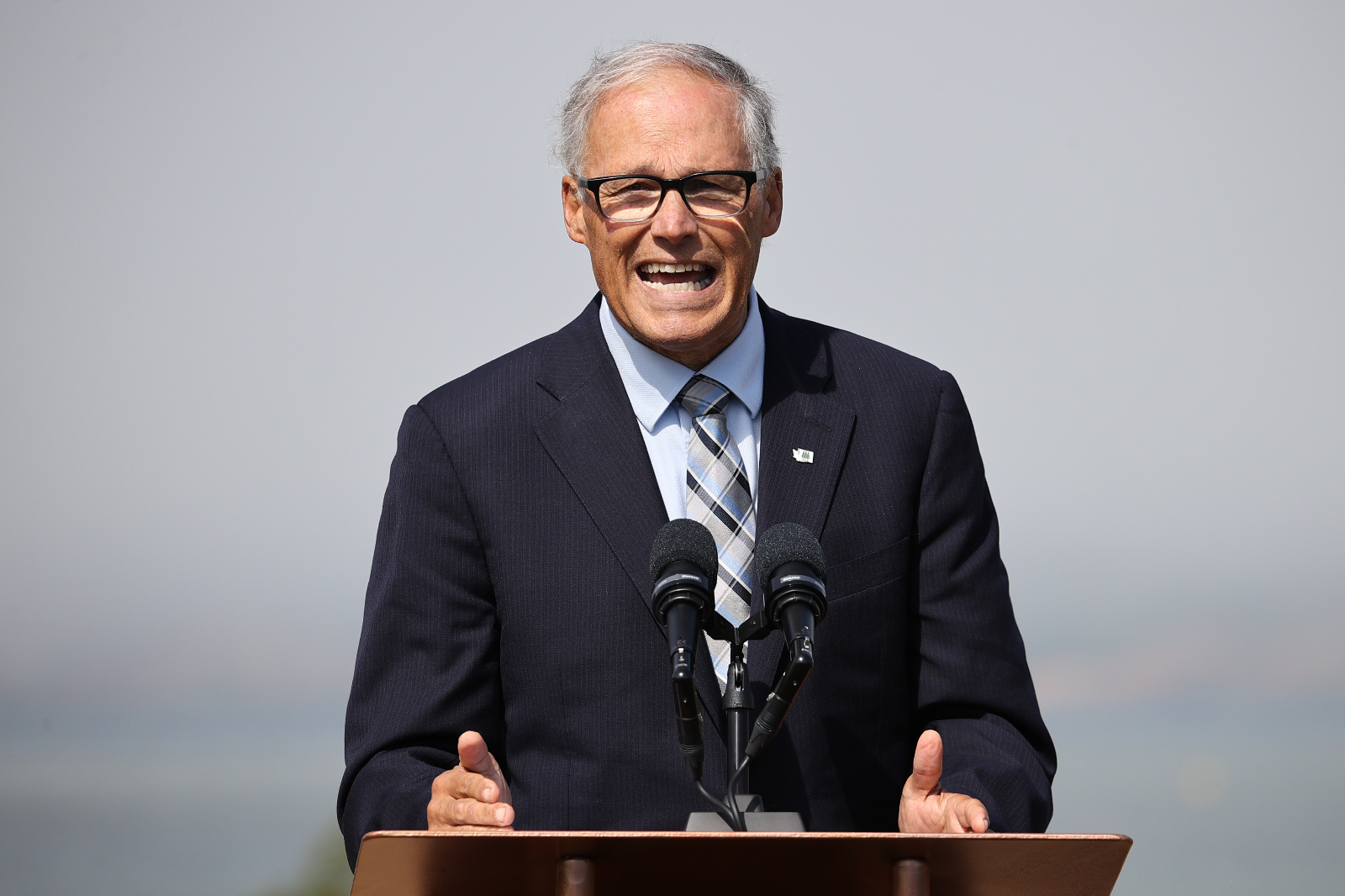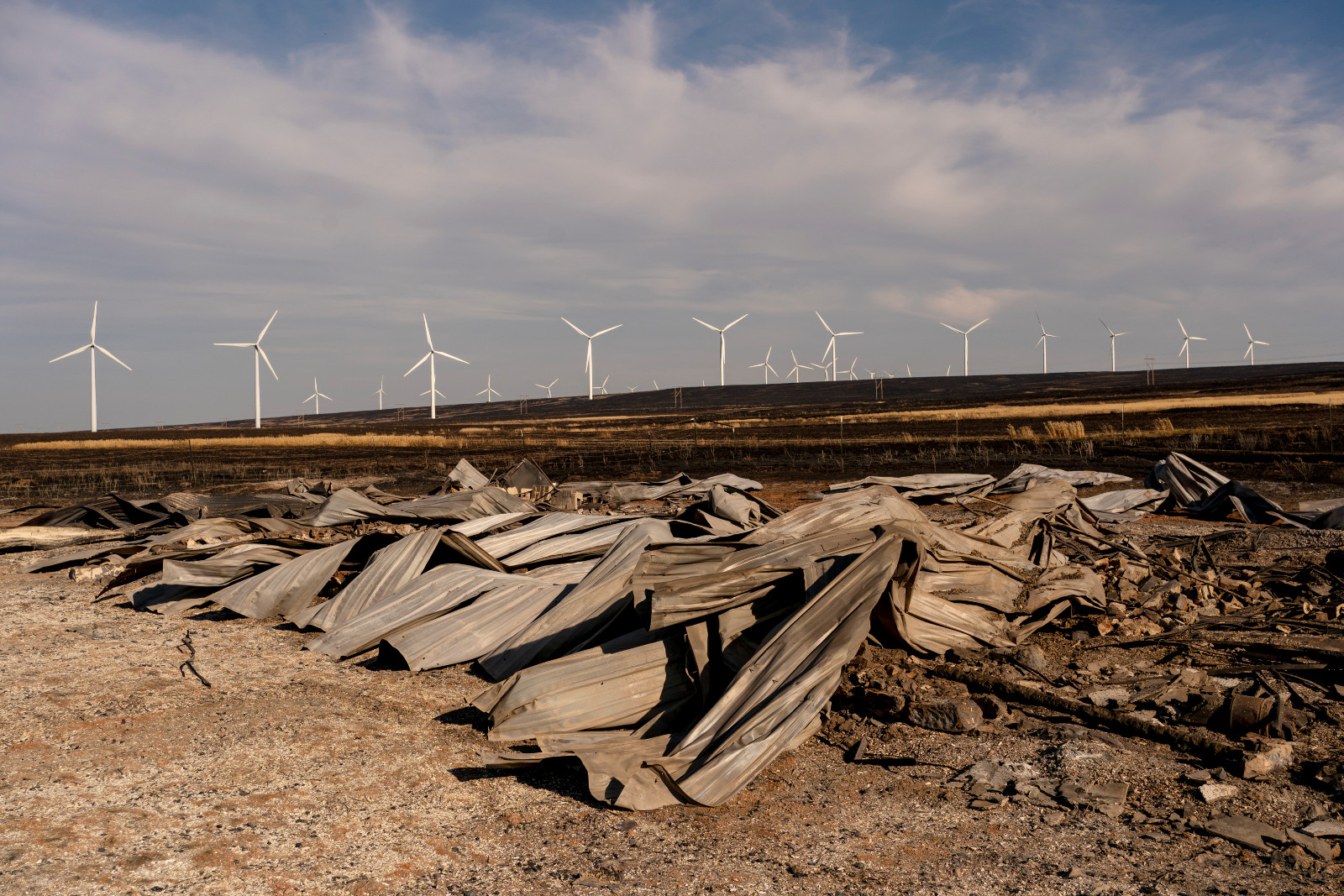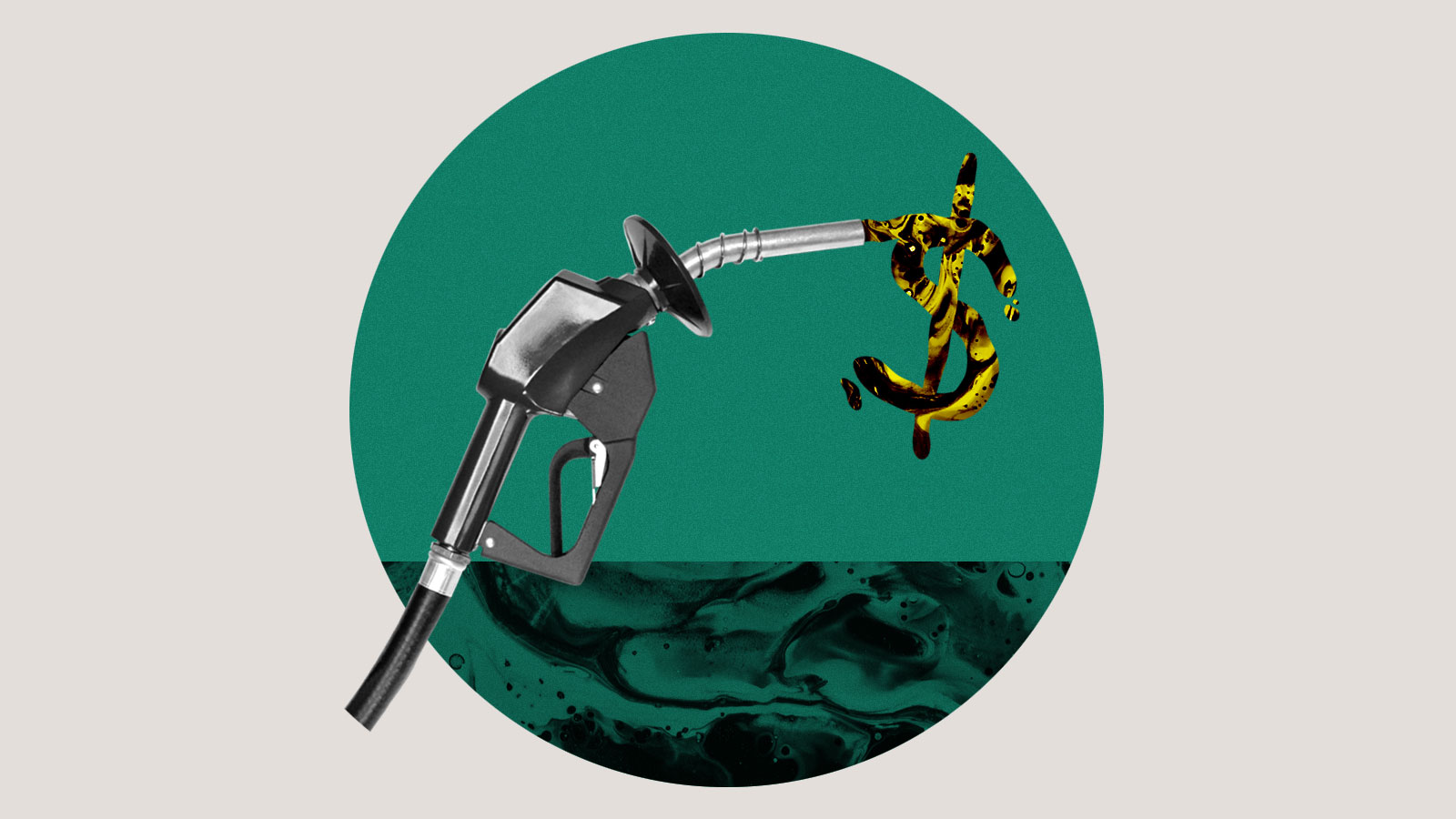For months now, it’s been free for anyone 18 or younger to ride the light rail through Seattle, the ferry across Puget Sound, and buses all over Washington state. As students tapped their new ORCA cards and hopped on the bus, probably the last thing they were thinking about was the state’s carbon pricing program, the source of funding behind their free ride.
One year after it went into effect, Washington’s “cap-and-invest” system has already brought in an eyebrow-raising $2.2 billion for action on climate change. The Climate Commitment Act, signed by Governor Jay Inslee in 2021, establishes a statewide limit on greenhouse gas emissions that steadily lowers over time. The law also creates a market, like California’s, for businesses to buy “allowances” for the carbon pollution they emit, prodding them to cut their emissions — and at the same time generating a boatload of money to tackle climate change. Touted as the “gold standard” for state climate policy, the law requires Washington to slash its emissions nearly in half by 2030, using 1990 levels as the baseline.
The program’s early success has attracted attention — praise from climate advocates and pushback from anti-tax hawks. A hedge fund manager named Brian Heywood has funded a petition drive to repeal the Climate Commitment Act, over its effects on gas prices, along with other petitions to strike down the state’s capital gains tax, give the police more leeway to pursue vehicles, and grant parents access to their kids’ medical records at school. The repeal could be headed to voters as a ballot initiative this November. If voters approve it, Heywood’s initiative wouldn’t just cancel the climate law; it would block the state from creating any other cap-and-trade system in the future.
“This is going to force us to do a better job communicating and defending our policies,” said Joe Nguyễn, a state senator representing White Center, an area just south of Seattle, who chairs the state’s Environment, Energy, and Technology Committee.
Experts said that the law is already having tangible benefits. Businesses, hoping to avoid paying for costly pollution “allowances,” are figuring out how to run their operations while emitting less carbon. Meanwhile, the revenue from the program is spurring clean energy efforts, including a large-scale solar project by the Yakama Nation, and attracting green industries like clean hydrogen. The funding will also help families install energy-efficient (and money-saving) heat pumps and provide incentives for garbage trucks, delivery vans, and buses to go electric.
The fate of the climate law could have ripple effects beyond Washington, the second state to adopt a cap on carbon after California. New York, for example, just unveiled plans for a cap-and-invest program in December. Officials in New York are closely monitoring the backlash in Washington state, and, in turn, other Northeastern states are watching New York to see what it decides. If Washington’s law goes up in flames, states might decide against enshrining similar carbon-cutting laws. But if it survives the backlash, it could boost other politicians’ confidence in putting a price on carbon pollution.
Grist spoke with experts in Washington about the lessons they’ve learned, one year into the program. They suggested that advocates for any stringent carbon price should be ready to play defense right away — and should work to make its benefits tangible to people around the state.
“The success of the Climate Commitment Act will depend on whether real people in real neighborhoods are actually seeing better infrastructure and things like better transit, home weatherization and electrification, and reductions in emissions from industry,” said Deric Gruen, co-executive director of the Front and Centered, an environmental justice coalition based in Seattle.
The gas price debacle
If the state’s residents have heard anything about the law, it’s most likely been about the bane of politics: the price of gasoline. Washington’s gas prices soared to $4.91 a gallon on average in June, the highest in the country.
Almost as soon as the first auction to sell pollution credits was held in March, raising $300 million, opponents started drawing a connection between the climate law and “pain at the pump.” The price of emitting a ton of carbon dioxide clocked in at $49, nearly double the average price in California’s cap-and-trade market at the time. Kelly Hall, the Washington director for the regional nonprofit Climate Solutions, attributes the higher prices to the stringency of Washington’s program, which requires more ambitious carbon dioxide cuts than California’s.
In a YouTube video promoting the repeal campaign, Heywood calls the law a “sneaky” gas tax and characterizes it as a money-grab by the state government. “Who knows where [the money] goes?” he asks in the video. He maintains that Inslee and state Democrats weren’t upfront about its potential cost to drivers of gas-powered vehicles. Last year, Heywood hired signature gatherers to go around the state, and in November, they turned in more than 400,000 signatures to repeal the climate law. If enough of those signatures pass the verification process, the repeal initiative will be headed to voters this November.
“Once those auctions were high, there were billboards and ad campaigns and everything blaming the price of gas on this,” said David Mendoza, the director of government relations at The Nature Conservancy in Seattle. “Being ready for that pushback as soon as implementation actually gets started, I think is key.”

State officials have estimated that the program added somewhere around 26 cents to the price of a gallon of gas, though some economists have put the number as high as 55 cents. Confidentiality rules around which companies are participating in cap-and-trade auctions make the analysis difficult. Lawmakers like Nguyễn are working on a “transparency bill,” similar to one that went into effect in California last year, that aims to open financial records from oil companies to see if they’re price gouging.
Proponents of the Climate Commitment Act argue that Washington’s gas prices have always been higher than the national average — they reached $5.50 in 2022, before the climate law began — and that oil companies are choosing to pass the costs onto consumers. They also point out that drivers of electric vehicles in the state are paying the equivalent of less than $1.50 a gallon in electricity. Last year, tens of thousands of Washingtonians switched to electric vehicles.
“If we are concerned about the cost of transportation for Washington businesses and residents, we have to keep our focus away from the arm-waving of the variations of gas prices that we’ve suffered through for decades and really look to true solutions,” said Michael Mann, the executive director for Clean & Prosperous Washington, a climate-friendly business coalition. “And the true solution to lower our transportation costs is to get off of fossil fuels.”
Who’s getting the money?
Legislators are using the revenue from the auctions for dozens of programs to tackle the state’s two biggest sources of carbon emissions: transportation and buildings. They have set aside $400 million for public transit projects, including the free transit for youth program, and $120 million for electrifying garbage trucks, delivery vans, school buses, and other large vehicles. Another $115 million is earmarked for rebates to help low-income households and small businesses install energy-efficient equipment like heat pumps, a key tool for lowering carbon emissions and energy bills.
The Climate Commitment Act requires that at least 35 percent of the investments go toward “overburdened communities,” such as the $25 million that’s for improving air quality in polluted neighborhoods. An additional 10 percent of investments are set aside for projects that directly benefit Native American tribes. The state budgeted $50 million to help tribes address climate change and adapt to its effects, for example, and $20 million for the Yakama Nation’s utility to build solar panels over irrigation canals.
The rest of the proceeds go to cleaning up transportation, accelerating the shift to clean energy, and helping communities and ecosystems withstand the effects of climate change, without specific percentages attached.

Front and Centered, which originally opposed the law based on concerns that cap-and-trade would fail to limit pollution, is now focused on making sure that communities get their promised share of the revenue. “The conversation is leaning into this thing about gas prices,” said Gruen, the group’s co-executive director, “but the attention really needs to be on effectiveness in reducing pollution and justice for frontline communities, and that seems to be getting lost in the conversation.” He says that communities should get more of a say in the budgeting process, so they get to be part of climate solutions in their neighborhoods.
It’s taking a while for some projects to get up and running, but that’s sort of the nature of the work, Mendoza said. “From my own engagement with government agencies, they’re trying to do things differently,” he said. “They know that they need to invest in overburdened communities. They know they want to reach smaller organizations to get in a pipeline to receive these funds that invest directly in communities.”
How things are changing for businesses
Climate policies are often discussed in terms of “carrots” (the rewards) and “sticks” (the punishments for emissions). The “stick” in Washington’s law prompts businesses to clean up their act so they don’t have to pay for pollution credits. Some progress is already happening on that front, according to Mann of Clean and Prosperous. The oil giant BP, which supported the Climate Commitment Act, spent about $270 million on efficiency upgrades at its refinery in Cherry Point near Bellingham, estimated to reduce the facility’s emissions by 7 percent. Washington’s law also gave the U.S. its first all-electric Amtrak bus line when the transportation company MTRWestern, which contracted with Amtrak, swapped its diesel-powered bus between Seattle and Bellingham for one that charges on electricity.
Then there are the carrots. Every dollar invested by the state has yielded $5 in federal money through matching grant programs from the federal Inflation Reduction Act and bipartisan infrastructure law, according to Nguyễn. Legislators in other states are jealous, he said, “because we were able to take advantage of these things when they couldn’t, and it’s going to really accelerate the work that we’re doing.”
The global mining company Fortescue, for example, obtained $20 million from the state to build a multibillion-dollar “clean hydrogen” plant in Centralia, Washington, near an old coal-fired power plant that’s set to retire in 2025. (Hydrogen can replace fossil fuels in a range of tough-to-decarbonize industries, from aviation to steelmaking.) The project was recently awarded an additional $1 billion in federal funds. Without the revenue from the Climate Commitment Act, Mann said, getting the grant money from the state that made the project eligible for federal funding “would have been next to impossible.”
Another example is Group14, a Seattle startup that’s building the world’s largest factory for advanced silicon battery materials, which promises to make the lithium-ion batteries used in EVs more powerful and faster-charging. The factory, set to open in Moses Lake, Washington later this year, is expected to provide enough battery materials for 200,000 electric vehicles every year. It’s bolstered by funds from Washington’s program and the federal bipartisan infrastructure law.
Whatever happens next with Washington’s cap-and-invest law, whether it gets overturned or continues to bring in billions for climate action, it’s bound to influence how other states choose to tackle global warming. “It’s so funny when people see these things like this happen, and they say, ‘Oh, well, this went wrong, and that went wrong, and that went wrong,’” Nguyễn said. “And it’s like, of course — that’s what leadership looks like. You know, nobody had a map of how this was supposed to happen.”



